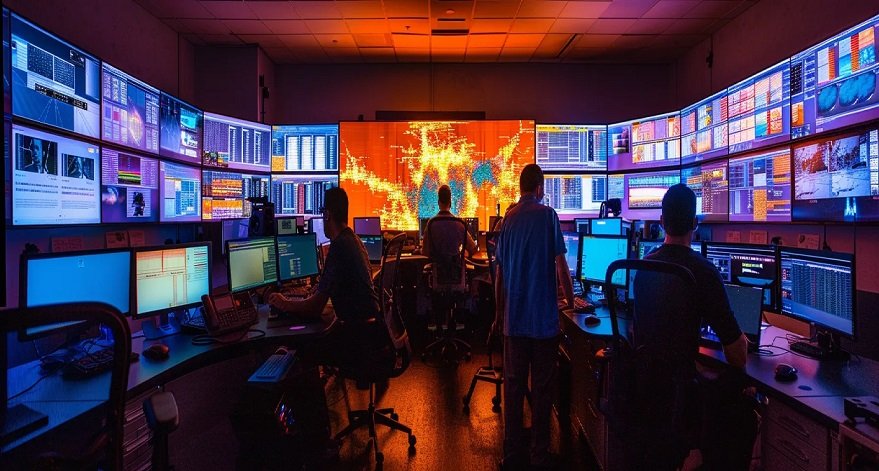The Rising Influence of AI in Content Creation
Artificial intelligence has transformed content creation, sparking a wave of innovation that is changing the media and communication landscape. AI-driven tools can efficiently produce articles, reports, and narratives at impressive speeds. Industries such as marketing, media, and publishing have embraced these developments, leveraging the automated content generation that AI enables. However, this surge in AI-generated text has led to tools like the AI Detector, designed to differentiate between human and machine-generated content. Consequently, it is becoming increasingly more work to identify authentic human insights. This rapid integration of AI also raises significant concerns regarding the authenticity of content, the originality of ideas, and the potential for spreading misinformation generated by AI.
Why Detecting AI-Generated Content Matters
The need for reliable methods to detect AI-generated content has become increasingly important. Whether it is about maintaining the authenticity of online publications or ensuring the integrity of academic papers, a clear line must be drawn between human and machine-created text. Despite the remarkable progress in AI, many readers and stakeholders still value the nuanced human touch in writing. This preference for human-generated content stems from a deep-seated trust in its authenticity. However, with today’s language models producing compelling prose, differentiating AI text often requires more than just a keen eye.
Tools and Techniques for AI Detection
Diverse technologies and methods have emerged to tackle the challenge of detecting AI-generated content. From linguistic analysis that dissects word patterns to digital watermarking ensuring transparency of origin, these tools are crucial in the fight against synthetic text. Linguistic analysis, for instance, focuses on identifying peculiarities in sentence structure, vocabulary usage, and rhythm that might indicate a non-human origin. Another effective strategy is anomaly detection, where AI models are trained to recognize discrepancies in content flow. While these methods are robust, it’s essential to acknowledge that every tool has limitations. The growing complexity of AI systems continues to challenge current detection methodologies, making it necessary to employ multiple strategies for more reliable identification.
Language Models: A Double-Edged Sword
Advanced language models, such as those developed in recent years, have dramatically improved the capability of AI in content generation. On one hand, they offer groundbreaking potential for enhancing productivity and creativity across different sectors. On the other hand, they present significant challenges for content authenticity. For example, these models have found applications in areas like automated weather reporting and sports commentary, where they can generate content quickly and efficiently. However, this convenience comes with the risk of errors and the loss of nuanced commentary traditionally associated with human reporters. The widespread use of such models necessitates ongoing vigilance to ensure they maintain the quality and accuracy of the information presented.
Implications Across Industries
Various sectors are grappling with the implications of AI-generated content, and the demand for accurate detection methods has never been higher. In journalism, where credibility and accountability are paramount, the rise of automated writing tools is both a boon and a challenge. While these tools can increase efficiency and output, they also raise concerns about the potential for bias or misinformation. Journalistic integrity relies heavily on validating information sources and ensuring content credibility, prompting the industry to adopt more stringent measures for monitoring AI-generated articles.
- Education: The education sector is another area significantly affected by AI in content creation. With easy access to advanced AI tools, students might be tempted to use them to complete assignments, presenting serious concerns about academic honesty. Educational institutions are thus under pressure to develop guidelines and deploy effective AI detection technologies to uphold academic integrity. By doing so, they aim to foster an environment where learning and assessment maintain their intended purpose without being undermined by technology.
- Marketing: In marketing, companies face the delicate task of balancing the efficiency offered by AI-driven content with maintaining an authentic brand voice. While automated content strategies can significantly enhance operational efficiency, there’s a risk of losing the personal touch and emotional resonance that consumers often seek. Marketers must be meticulous in ensuring their AI-generated content aligns with their brand’s values and genuinely engages customers, building meaningful connections rather than superficial interactions.
The Future of AI Detection
The methods and resources created to identify AI-generated content will also progress as AI technology advances. The field of AI detection is poised to grow, adapting to keep pace with the rapid advancements in artificial intelligence. Progress in machine learning and natural language processing could improve our ability to detect and distinguish between human-created content and machine-generated content. Continuously enhancing and modifying detection tools is essential to keep up with the rapid developments in AI technology.
Ethical Considerations
With the progression of technology, the significance of ethical considerations in utilizing AI for content creation and detection grows. Issues such as transparency, user consent, and privacy are at the forefront of these discussions. Stakeholders across industries are called upon to collaborate, establishing clear guidelines and standards that promote AI-driven content tools’ responsible and ethical use.
Balancing innovation with ethical standards is crucial for maximizing AI’s benefits and safeguarding the rights of content creators and consumers.
Key Challenges and Opportunities
The creation of AI detection tools brings about notable difficulties and promising prospects. It is essential to consider and correct any biases in machine learning algorithms to guarantee the just and precise detection of AI-created content. By refining these technologies, the door opens to enhancing the quality and authenticity of content across various platforms, ultimately benefiting creators and consumers. Insights from advancements in language processing technologies suggest that the future holds potential for profound improvement, provided we approach these challenges with diligence and creativity.
Overall, AI-generated content presents a blend of challenges and opportunities. As stakeholders across industries navigate this terrain, a focus on authenticity, accountability, and innovation will remain essential in the art and science of detecting AI-generated content.




